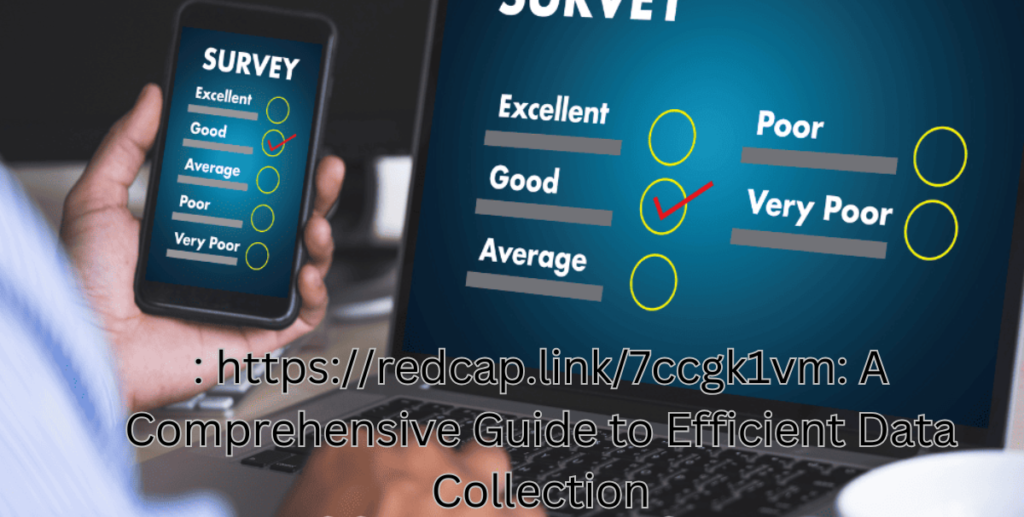Data collection is a crucial aspect of research, : https://redcap.link/7ccgk1vm business strategies, and decision-making processes. In today’s fast-paced world, the need for accurate data has never been more significant. Organizations are constantly seeking ways to gather information efficiently to drive their success. But how can you ensure that your data collection methods are both effective and efficient? That’s where this comprehensive guide comes in.
Whether you’re conducting medical research or launching a new marketing campaign, understanding different data collection methods can make all the difference. From surveys to observations, each method has its unique strengths and challenges. This guide will walk you through various techniques while highlighting tips and best practices for managing your data seamlessly.
So buckle up as we explore the landscape of efficient data collection! You’ll learn how to leverage technology effectively and optimize your processes like never before. Let’s dive right in!
The Importance of : https://redcap.link/7ccgk1vm
Efficient data collection is the backbone of successful research and strategic initiatives. The right approach can significantly impact outcomes, ensuring decisions are grounded in solid evidence.
Organizations that prioritize effective data gathering foster a culture of informed decision-making. This leads to improved strategies, resource allocation, and overall performance.
Moreover, efficient data collection minimizes errors and enhances reliability. When teams have access to accurate information, they can respond swiftly to challenges and adapt as needed.
In an era where time is money, streamlining these processes saves valuable resources. It allows professionals to focus on analysis rather than being bogged down by inefficiencies.
Embracing efficient methods empowers organizations to innovate while maintaining quality standards—a necessity in today’s competitive landscape.
Types of Data Collection Methods
Data collection methods are diverse, each serving unique purposes. Surveys and questionnaires are among the most common techniques. They allow for gathering large amounts of data quickly, often using structured questions to ensure consistency.
Interviews offer a more personal touch, providing depth through open-ended discussions. This method can uncover insights that structured approaches might miss.
Observational studies involve watching subjects in their natural environments. Researchers can gather real-time data without influencing behaviors.
Focus groups bring together a small group of participants to discuss specific topics. This interactive setting encourages discussion and can reveal collective attitudes.
Secondary data analysis uses existing data collected by others. It saves time and resources while providing valuable insights across various fields. Each method has its strengths, making it essential to choose wisely based on research goals.
Advantages and Disadvantages of Each Method
Surveys are a popular choice for data collection. They’re cost-effective and can reach a large audience quickly. However, response rates can vary significantly. People may not always provide honest or thoughtful answers.
Interviews offer depth and detail that surveys often lack. Through direct interaction, researchers can explore complex topics in greater detail. Still, this method is time-consuming and requires skilled interviewers to avoid bias.
Observational methods allow researchers to collect data in real-world settings without interference. This approach captures authentic behaviors but might be influenced by the observer’s presence, altering participants’ actions.
Focus groups foster dynamic discussions among participants, yielding rich qualitative insights. But they can be dominated by vocal individuals, potentially overshadowing quieter voices within the group.
Each method carries its strengths and weaknesses; understanding them helps tailor your approach based on specific research goals.
Tips for Efficient Data Collection
Start by defining clear objectives. Knowing exactly what data you need will streamline the collection process.
Consider your target audience. Tailor your approach to ensure they feel comfortable sharing information. This can significantly improve response rates.
Use simple and concise language in surveys or questionnaires. Complicated wording often leads to misunderstandings, which can skew results.
Set realistic timelines for data collection phases. Rushing through this step can lead to errors, while too much time might cause participant fatigue.
Utilize pre-testing methods on a small group before full deployment. This helps identify potential issues early on and allows for adjustments without major disruptions.
Leverage automation tools when possible. They save time and reduce human error, making the entire process smoother and more efficient.
Utilizing Technology for Data Collection
Technology has transformed the landscape of data collection. With tools like online surveys and mobile apps, gathering information is faster and more efficient than ever.
Cloud-based platforms allow for real-time data entry. This means you can access information from anywhere, at any time. Team collaboration becomes seamless as everyone works on a single platform.
Automated tools reduce human error significantly. They streamline processes from survey distribution to response analysis, freeing up valuable time for researchers and analysts alike.
Data visualization software also plays a crucial role. It turns complex datasets into easy-to-understand graphs and charts, making insights accessible to all stakeholders.
Moreover, integrating machine learning algorithms enhances predictive analytics capabilities. This allows organizations to anticipate trends based on historical data patterns effectively.
Incorporating technology not only simplifies logistics but also enriches the quality of collected data. Embracing these innovations leads to smarter decision-making across industries.
Best Practices for Managing and Analyzing Data
Effective data management begins with organization. Categorize your data logically. Use folders, tags, or databases to streamline access.
Regularly back up your information. This prevents loss due to unforeseen circumstances and ensures continuity in analysis.
When analyzing data, maintain a clear focus on objectives. Define what you’re trying to uncover or prove before diving into the numbers.
Utilize visualization tools like graphs and charts. They transform complex datasets into understandable insights that can facilitate better decision-making.
Engage in regular audits of your data processes. This will help identify inefficiencies or gaps that need addressing over time.
Encourage collaboration among team members involved in data handling and analysis. Diverse perspectives often lead to richer interpretations and innovative solutions without redundancy.
Investing time upfront into these practices pays off significantly during the analysis phase, leading to more accurate conclusions drawn from reliable data sets.
Conclusion: : https://redcap.link/7ccgk1vm
Efficient data collection is pivotal in today’s fast-paced world. It shapes decision-making and drives progress across various sectors.
Implementing the right methods can streamline processes, enhance accuracy, and save valuable time. The landscape of data collection offers diverse options tailored to specific needs.
Embracing technology opens doors to innovative tools that simplify gathering and analyzing information. These advancements not only boost efficiency but also improve accessibility for teams worldwide.
As organizations navigate their unique challenges, staying adaptable remains crucial. Continuous learning about best practices can lead to significant improvements over time.
Investing effort into effective data collection strategies pays off in richer insights and better outcomes. Harnessing this knowledge enables businesses to thrive amidst evolving demands and complexities in an increasingly data-driven environment.
FAQs
Q: What is data collection and why is it important?
Data collection involves gathering information for analysis to inform decisions. It’s crucial because accurate data drives effective strategies, enhances productivity, and supports innovation across various fields.
Q: What are the different methods of data collection?
Common methods include surveys, interviews, observations, experiments, and document reviews. Each method serves unique purposes depending on the type of research or project you are undertaking.
Q: How do I choose the right data collection method?
A: Consider your goals, target audience, resources available (time and budget), and the nature of the information needed. Aligning these factors will help you select an appropriate method.
Q: What technology can enhance my data collection process?
A: Various tools such as online survey platforms (like Google Forms or SurveyMonkey), mobile applications for field data entry, and specialized software for statistical analysis can streamline your efforts significantly.
Q: How can I ensure quality in my collected data?
A: Implement clear protocols for training collectors on methodologies. Regularly validate completed datasets against predefined criteria to identify errors early on in the process.
Q: Is there a best practice for managing large datasets?
A: Utilize database management systems that allow easy access while maintaining security measures. Regular backups and updates also play a critical role in safeguarding your valuable information.
Q: Can qualitative data be integrated with quantitative findings?
A: Absolutely! Combining both types provides a more comprehensive understanding of research questions by offering richer insights alongside statistical evidence.
These answers should provide clarity around common concerns regarding efficient data collection practices while encouraging further inquiry into this essential topic.

















